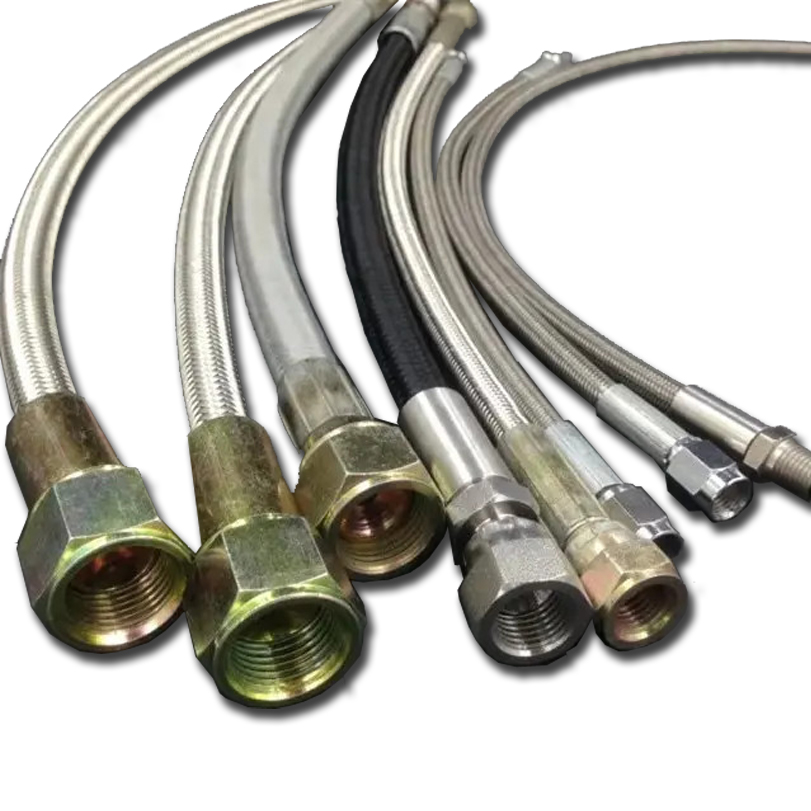335345435
Oct . 17, 2024 02:26 Back to list
flexible high pressure hydraulic hose
Flexible High Pressure Hydraulic Hoses Essential Components of Modern Hydraulic Systems
In today’s industrial landscape, flexible high pressure hydraulic hoses have become indispensable to the efficient functioning of various machinery and equipment. These hoses are designed to handle high-pressure applications where flexibility, durability, and reliability are crucial. They play a significant role in transferring fluids in hydraulic systems, making them essential for numerous industries, including construction, manufacturing, and automotive.
The primary function of hydraulic hoses is to transport hydraulic fluids from one part of a system to another. Unlike rigid pipes, flexible hoses can bend and twist, allowing them to be installed in tight spaces and more complex configurations. This flexibility is especially important in mobile machinery, where movement and vibrations are common. High-pressure hydraulic hoses can withstand extreme pressure levels, often exceeding 5,000 PSI, which is vital for ensuring the proper function of hydraulic systems found in heavy equipment like excavators, loaders, and cranes.
One of the significant advantages of flexible hydraulic hoses is their ability to absorb shocks and vibrations. This characteristic helps protect the integrity of the system by minimizing wear and tear. Additionally, modern manufacturing processes have enhanced the materials used in hose construction. Most high pressure hydraulic hoses are made from synthetic rubber compounds, reinforced with steel wire braids or spirals. This combination ensures not only flexibility but also strength and resistance to wear, abrasion, and environmental factors.
flexible high pressure hydraulic hose

Moreover, the design and engineering of hydraulic hoses have evolved to improve safety. High-pressure hoses are rigorously tested to meet or exceed industry standards, ensuring they can withstand the demanding conditions of their application. Features such as flame resistance, chemical compatibility, and temperature tolerance can be incorporated, depending on the operational environment.
Installation and maintenance of hydraulic hoses are vital for optimal performance. Proper installation techniques include ensuring the correct routing, avoiding kinks, and using appropriate fittings to prevent leaks. Regular inspections and maintenance can significantly extend the life of hydraulic hoses, reducing downtime and saving costs. Operators are encouraged to monitor for signs of wear, swelling, or leaks, which can indicate that a hose needs to be replaced.
In conclusion, flexible high pressure hydraulic hoses are a fundamental component of modern hydraulic systems, offering versatility and resilience in demanding environments. Their ability to transport fluids under high pressure while accommodating movement and vibration makes them suitable for various applications, from heavy machinery to complex manufacturing processes. As industries continue to evolve and adapt to new technologies, the importance of reliable hydraulic hoses will only increase, driving innovation in hose design and materials. Whether in construction sites or factory floors, the impact of high-pressure hydraulic hoses will keep powering the heart of industrial machinery for years to come.
-
Discount Hydraulic Hose Factories | Top Quality & Discounts
NewsJul.20,2025
-
EN856 4SP Hydraulic Hose - High Pressure & Durable
NewsJul.20,2025
-
SAE 100 R17 Black Smooth Cover Hydraulic Hose
NewsMar.07,2025
-
SAE 100 R17 Black Smooth Cover Hydraulic Hose
NewsMar.07,2025
-
SAE 100 R17 Black Smooth Cover Hydraulic Hose
NewsMar.07,2025
-
SAE 100 R17 Black Smooth Cover Hydraulic Hose
NewsMar.07,2025



